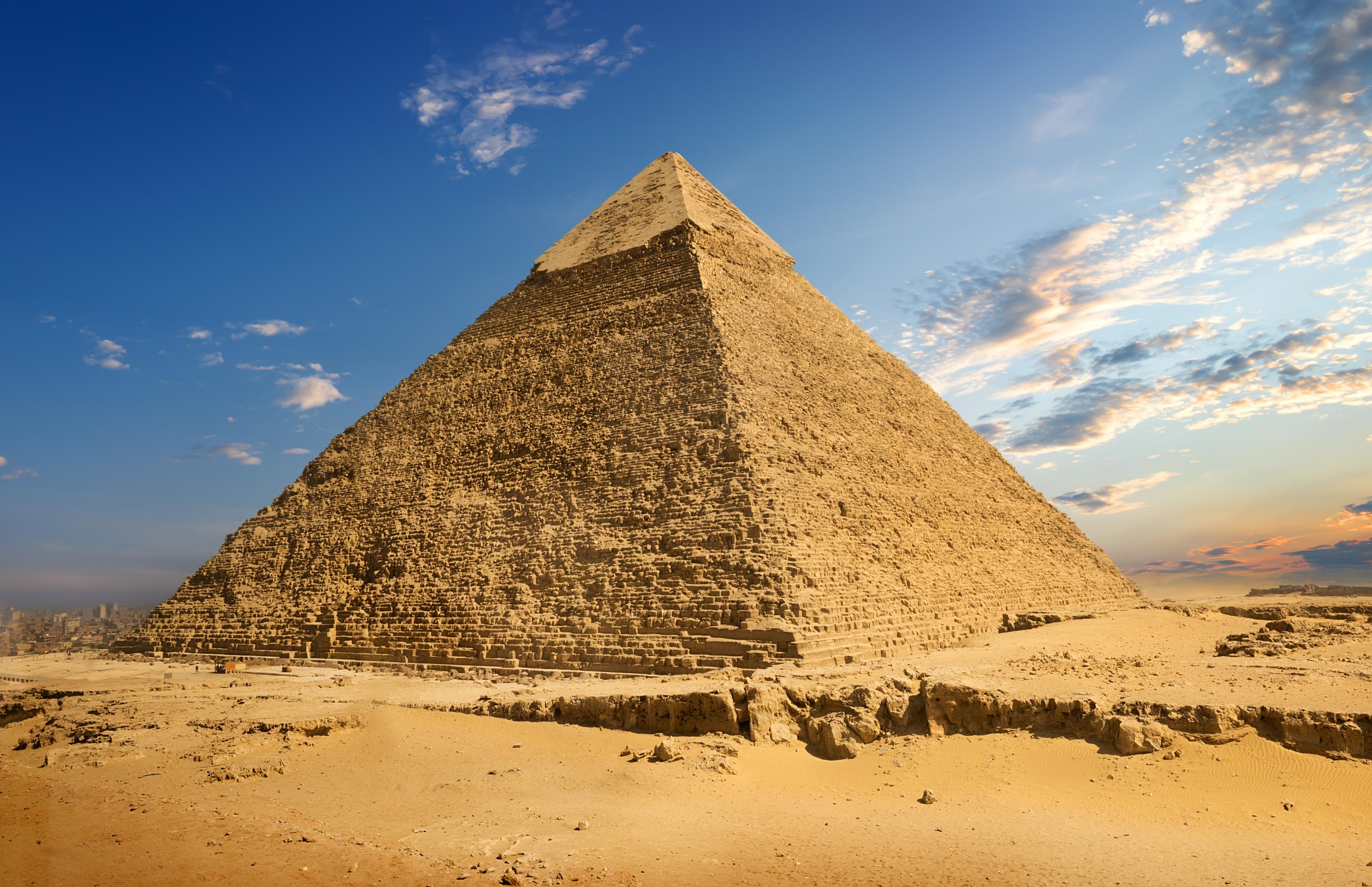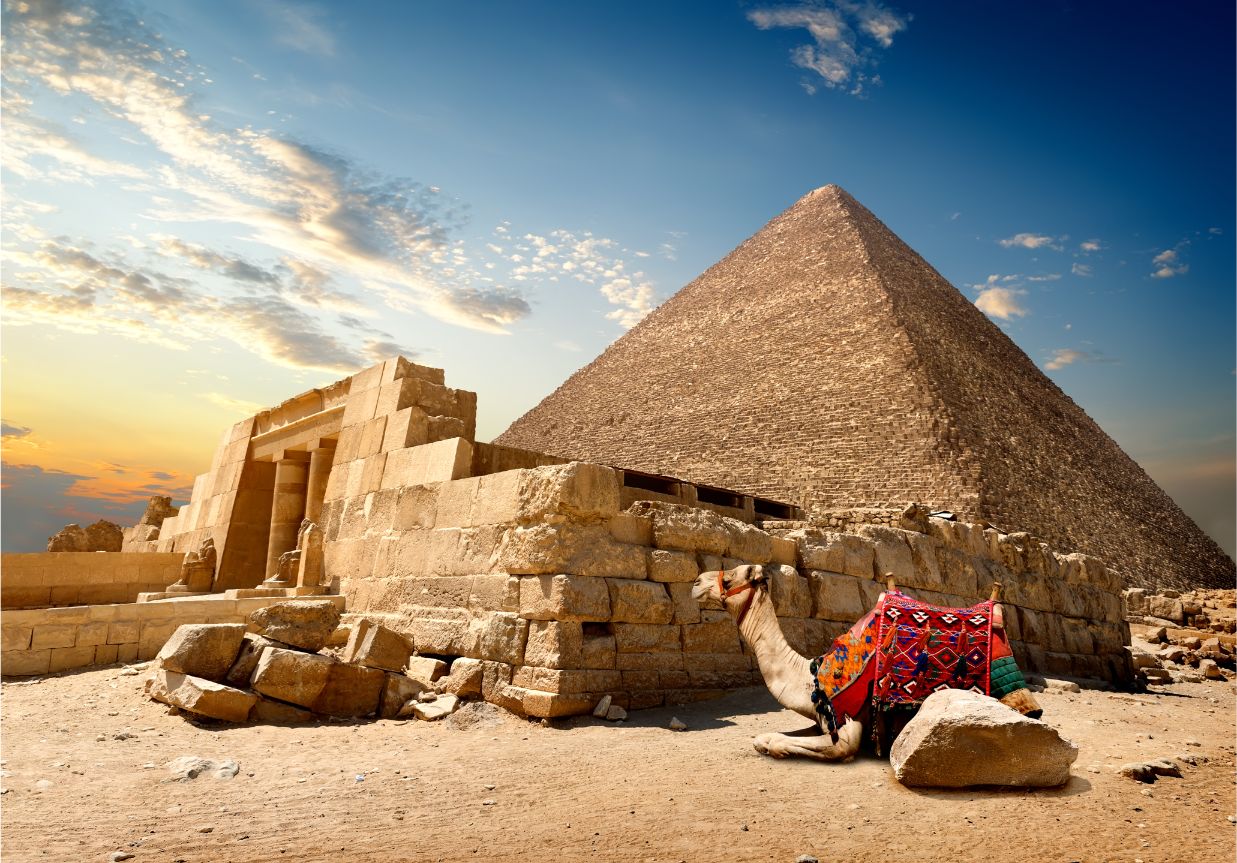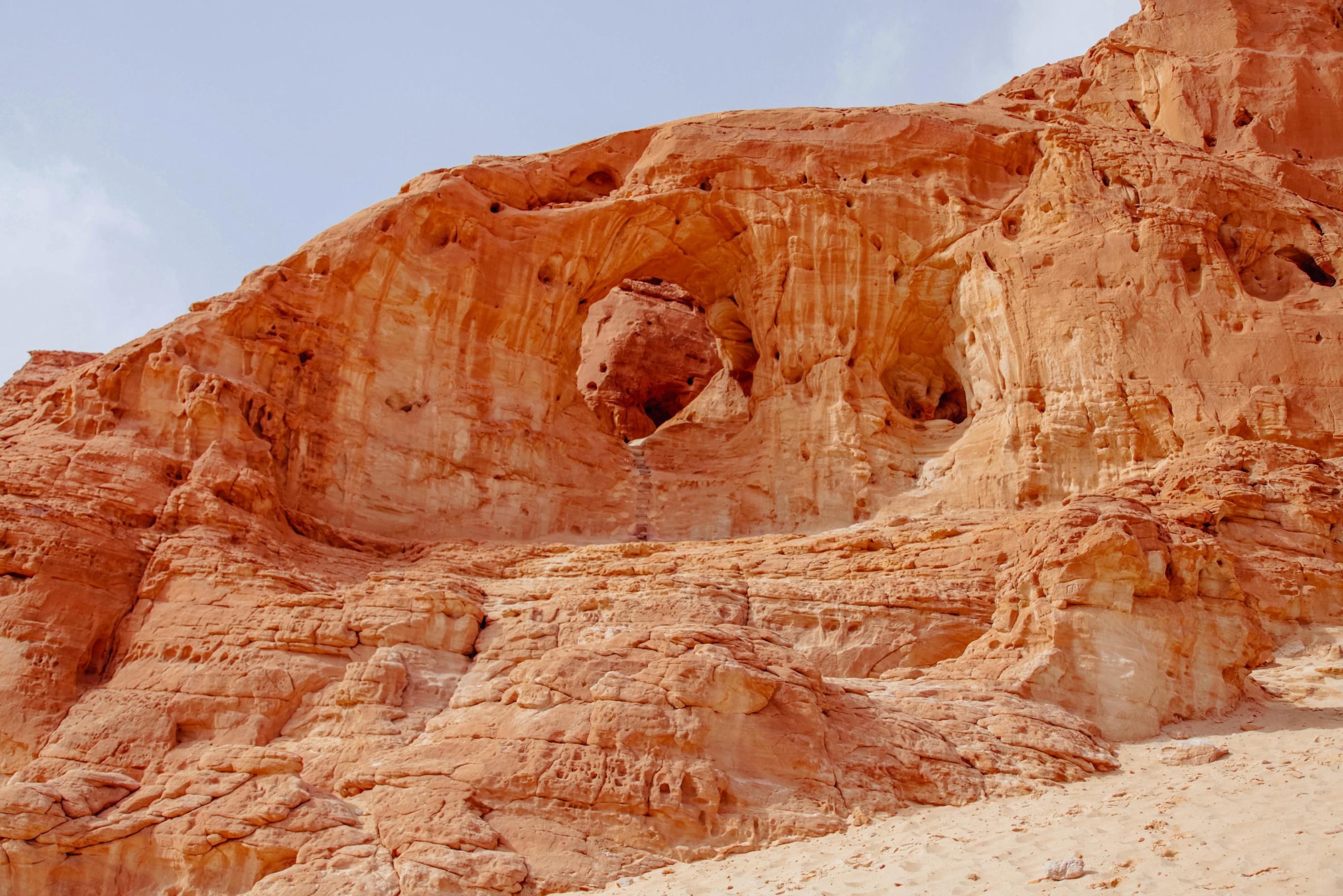
The Enduring Brilliance of Ancient Egyptian Architecture
Exploring Earth's Most Enchanting Corners
8 min read
Category : AdventuresDestination : EgyptEgypt, the land of pharaohs and timeless mysteries, continues to captivate the world with its monumental structures. For the discerning traveler, understanding the intricate layers of Ancient Egyptian Architecture isn't just about admiring the grand scale; it's about appreciating the profound beliefs, sophisticated engineering, and artistic vision that shaped one of history's most enduring civilizations. As your premier luxury travel specialist, we invite you to embark on a journey that unravels the fascinating types and characteristics of Ancient Egyptian Architecture, revealing the genius behind these immortal masterpieces.
Beyond the iconic pyramids, a wealth of architectural innovation awaits, each structure telling a story of power, piety, and the eternal quest for the afterlife.
Unpacking the Marvels: What are 3 types of Egyptian architecture?
While the entire spectrum of Ancient Egyptian Architecture is vast and multifaceted, it can broadly be categorized into three primary types, each serving distinct purposes and reflecting evolving cultural and religious beliefs. These categories demonstrate the versatility and depth of their architectural prowess, making them endlessly fascinating things to visit in Egypt.
1. Funerary Architecture: Tombs and Pyramids
This is perhaps the most famous and iconic type of Ancient Egyptian Architecture, driven by their elaborate beliefs about the afterlife. The Egyptians believed that a well-preserved body and a richly furnished tomb were essential for the deceased to achieve eternal life.
Mastabas:
These were the earliest forms of monumental royal and elite tombs, rectangular, flat-topped structures with sloping sides, built of mud-brick or stone. They contained an underground burial chamber and an offering chapel above ground. The mastaba served as the architectural prototype from which the pyramid later evolved.
Pyramids:
The ultimate expression of royal funerary architecture, pyramids evolved from the mastaba. They symbolized the primordial mound from which the world was created and served as a ramp for the pharaoh's soul to ascend to the heavens. The evolution from stepped to true pyramids showcases a remarkable leap in engineering and design within Ancient Egyptian Architecture.
Rock-Cut Tombs:
During the New Kingdom, particularly in places like the Valley of the Kings and Valley of the Queens, pharaohs and nobles shifted to excavating elaborate tombs directly into rock cliffs. These subterranean complexes offered greater security against tomb robbers and allowed for extensive, vibrant wall paintings depicting the journey through the underworld.
2. Religious Architecture: Temples
Temples were monumental structures dedicated to the gods, serving as houses of worship, centers for rituals, and places where priests maintained the cosmic order (Ma'at) through offerings and ceremonies.
Cult Temples:
These were built for the worship of specific gods, such as the grand Karnak Temple Complex and Luxor Temple, dedicated primarily to Amun, Mut, and Khonsu. They typically followed a processional axis, leading from a monumental pylon gateway, through courtyards, hypostyle halls, and finally to the sacred sanctuary. Their colossal scale and intricate decoration, covered with hieroglyphs and reliefs, are prime examples of Ancient Egyptian Architecture at its most awe-inspiring.
Mortuary Temples:
Often associated with royal tombs (especially in the New Kingdom), these temples were dedicated to the cult of a deceased pharaoh, ensuring his continued worship and sustenance in the afterlife. The mortuary temple of Hatshepsut at Deir el-Bahari is a striking example, carved into the cliffs with a unique terraced design.
3. Domestic and Palatial Architecture
While less has survived compared to tombs and temples (due to being built primarily from less durable mud-brick), domestic and palatial architecture offers insights into daily life.
Houses:
Homes for common people were typically simple mud-brick structures, often clustered around the Nile for access to water and fertile land.
Palaces:
Royal palaces were much grander, sprawling complexes built also of mud-brick, but decorated with colorful frescoes and featuring multiple courtyards, living quarters, and administrative areas. Though few have survived in their entirety, their layouts show sophisticated planning for comfort and governance.
Tracing the Roots: What is the oldest architecture in Egypt?
The distinction of being the oldest architecture in Egypt in terms of monumental stone construction belongs to the Step Pyramid of Djoser at Saqqara. Commissioned by Pharaoh Djoser during the Third Dynasty (c. 2670 BCE) and designed by the legendary Imhotep, this revolutionary structure marked a monumental leap in Ancient Egyptian Architecture. It was the world's first large-scale stone building and represented an evolution from the simpler mastaba tomb to a grand, stepped pyramid, paving the way for the true pyramids of the Fourth Dynasty. The Saqqara necropolis itself is the site of many early dynastic burials, making it an incredibly significant archaeological zone.
What is the architecture of the pyramids?
The architecture of the pyramids is a testament to the ancient Egyptians' mastery of mathematics, astronomy, and engineering. At their core, the pyramids (especially the "true" pyramids) have:
- A rectangular base: Precisely oriented to the cardinal directions.
- Four sloping triangular (or sometimes trapezoidal) sides: Rising from the base to meet at a single apex.
- Internal Chambers and Passageways: A complex network of corridors, shafts, and chambers, designed to house the burial chamber of the pharaoh, false burial chambers to deter robbers, and ventilation shafts.
- Massive Stone Blocks: Primarily limestone, quarried locally, transported, and meticulously placed. The Great Pyramid of Khufu alone is estimated to contain over 2 million stone blocks.
- Outer Casing (often lost): Many pyramids were originally covered with a layer of finely polished white limestone, giving them a dazzling, reflective appearance that symbolized the sun's rays.
- Associated Complexes: Pyramids were never standalone structures. Each was part of a larger funerary complex that included a mortuary temple (for rituals dedicated to the deceased pharaoh), a causeway connecting it to a valley temple (at the edge of the Nile floodplain), and subsidiary pyramids for queens or important officials. This holistic design is a key aspect of Ancient Egyptian Architecture for royal burials.
A Glimpse into the Past: What did Egypt look like 3000 years ago?
Imagine a landscape dominated by the life-giving Nile River, its banks a fertile green ribbon contrasting sharply with the vast, arid deserts on either side. Approximately 3000 years ago, during the New Kingdom (around 1000 BCE), Egypt was at or nearing the height of its imperial power and cultural sophistication.
Urban Centers
Cities like Memphis (the old capital) and Thebes (modern-day Luxor, the religious capital) would have been bustling hubs. Thebes, especially, would have been magnificent, dominated by the colossal Karnak and Luxor Temples, alive with priests, scribes, artisans, and merchants.
Monumental Construction
The landscape was already adorned with awe-inspiring Ancient Egyptian Architecture: the Pyramids of Giza were ancient even then, standing for over 1500 years. New Kingdom pharaohs were carving out grand rock-cut tombs in the Valley of the Kings and constructing massive temple complexes across the land.
Nile as a Highway
The Nile River was the primary artery of transportation, teeming with feluccas, barges, and royal boats, carrying goods, people, and colossal stone blocks for building projects.
Daily Life
Along the riverbanks, simple mud-brick homes clustered together. Agriculture thrived, dependent on the annual Nile inundation. Life revolved around religious festivals, agricultural cycles, and the elaborate court of the pharaoh, who was revered as a living god.
Cultural Richness
Art, hieroglyphic writing, literature, and religious practices were highly developed. The country was connected through trade routes extending to Nubia, the Levant, and beyond.
What is the most historic place in Egypt?
For many, the Giza Plateau remains the quintessential historic place in Egypt. The Great Pyramids and the Sphinx are immediate and universal symbols of Ancient Egyptian Architecture and civilization. Their age and scale offer an unparalleled connection to antiquity.
What is the most magical place in Egypt?
While subjective, the Temple of Philae, dedicated to the goddess Isis, often evokes a profound sense of magic. Its stunning setting on an island in Aswan, combined with the story of its meticulous relocation and the delicate beauty of its reliefs, gives it an ethereal charm, especially when visited by boat at dawn or dusk.
What is the greatest archaeological find in Egyptian history?
The discovery of Tutankhamun's tomb in the Valley of the Kings in 1922 by Howard Carter is widely regarded as the greatest archaeological find. Its near-intact state yielded an unparalleled wealth of royal artifacts, providing a unique and incredibly detailed window into the burial practices, beliefs, and artistic splendor of Ancient Egyptian Architecture and culture during the New Kingdom.
A Lasting Legacy of Grandeur
From the earliest mastabas at Saqqara to the colossal temples along the Nile, Ancient Egyptian Architecture stands as an eternal testament to a civilization that mastered monumental building, symbolic artistry, and sophisticated engineering. These structures, built to defy time, continue to inspire awe and offer profound insights into a culture deeply intertwined with its beliefs and environment. For the luxury traveler, a journey through Egypt is not just a visit to ancient sites; it's an immersive education in the very foundations of architectural grandeur.
Allow us to guide you through the unparalleled beauty and rich history of Ancient Egyptian Architecture, crafting a bespoke journey that unveils its secrets in the most luxurious and unforgettable way.
Related Articles

Top 10 Interesting Facts About the Pyramids of Giza
Explore top facts about the pyramids of Giza of The Pyramids of Giza hold fascinating mysteries, from their astronomical alignment to the sheer ingenuity.

A Journey to the Enigmatic Dragon Head Mountain Egypt
Discover the awe-inspiring Dragon Head Mountain Egypt, a geological wonder in the Sinai desert and witness its captivating "eye" cave.

7 Natural Wonders of the World
Witness Earth's most breathtaking masterpieces from the Grand Canyon's vast expanse to the vibrant Great Barrier Reef, these 7 Natural Wonders inspire awe and wonder.
